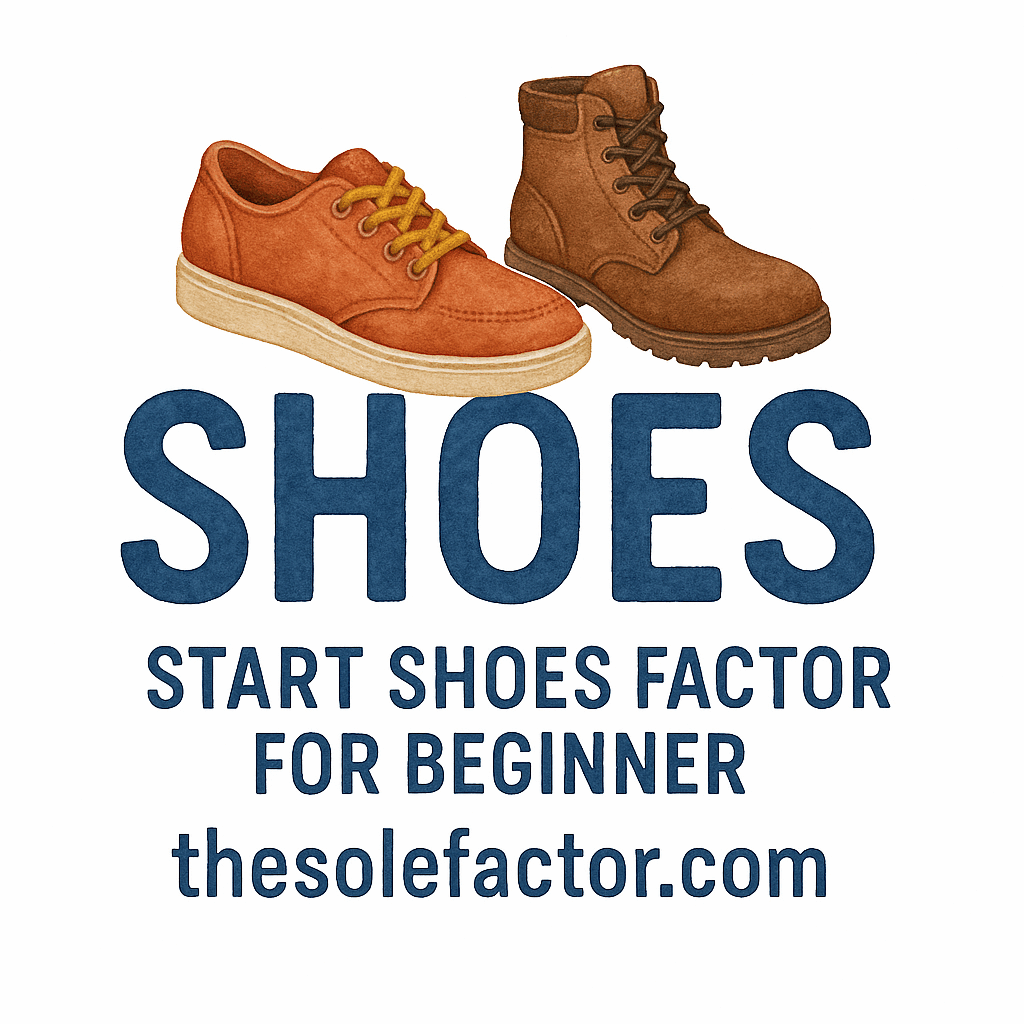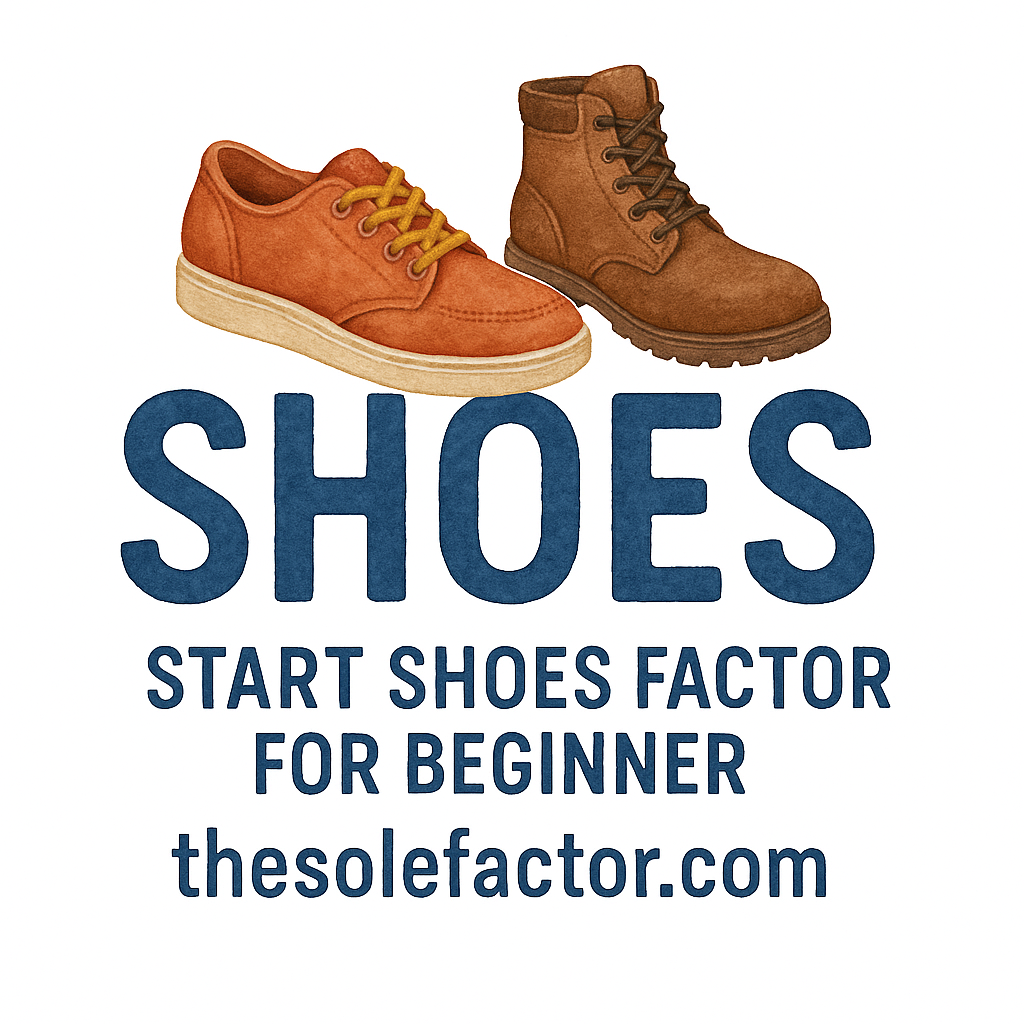Introduction: The Thrill of Starting Your Own Shoes Factory
Starting a shoes factory from scratch is an exhilarating challenge that can lead to immense rewards if approached with the right strategies. Whether your goal is to launch a brand new line of shoes or enter the business as a manufacturer, the journey is filled with careful planning, strategy, and execution. In this article, we’ll walk you through the 7 essential steps to create your own shoes factory, from understanding the market to launching a solid marketing plan.
By following this guide, you’ll have the tools you need to transform your shoe manufacturing dream into reality. Let’s dive in!
Step 1: Conduct Thorough Market Research
Market research is your first critical step. Understanding the demand, competition, and audience is essential to laying the groundwork for your shoe manufacturing business. Without solid research, you could end up producing shoes that don’t resonate with the market.
Understanding Market Demands
The first thing you need to establish is what types of shoes the market demands. Do you want to focus on high-end fashion shoes, athletic footwear, or everyday shoes? Research tools like Google Trends and online surveys can provide valuable insights into the latest footwear trends.
Analyzing Competitors
Study your competitors carefully. Who are the leading brands, and what makes them successful? By evaluating their product offerings, pricing strategies, and customer experiences, you’ll better understand how to differentiate your brand and identify gaps in the market.
Identifying Target Audience
Once you’ve done competitor analysis, it’s time to define your target audience. Are you aiming for young, fashion-forward individuals, professional athletes, or budget-conscious consumers? Understanding your target market is crucial for shaping both your product and your marketing strategy.
Step 2: Develop a Business Plan
Now that you have a clearer picture of the market, it’s time to develop a business plan. This plan will act as your roadmap, outlining your objectives and how you’ll achieve them.
Importance of a Business Plan
A business plan is essential for your shoes factory’s success. It serves not only as a guide for your internal operations but also as a pitch to potential investors. If you’re unsure where to start, check out resources on business planning for further guidance.
Key Elements to Include
Your business plan should include:
- Executive Summary: A concise overview of your business and its goals.
- Market Analysis: Insights from your research on the footwear industry, competitors, and customer needs.
- Product Line: A description of the types of shoes you’ll produce.
- Marketing Strategy: How you will promote and sell your shoes.
- Financial Plan: Your projected income, expenses, and profitability.
Example: Business Plan for a Shoes Factory
For instance, suppose your shoes factory will focus on eco-friendly products. Your business plan could outline how you will source sustainable materials and design shoes that are both stylish and environmentally friendly. Read more about branding strategies to help you define your business image.
Step 3: Legal and Regulatory Requirements
Before you can start manufacturing, ensure your business is compliant with the legal and regulatory requirements. These vary depending on your location but may include registering your business and obtaining specific licenses.
Register Your Business
Start by registering your business. Whether you choose to operate as a sole proprietorship, LLC, or corporation, you’ll need to file with the appropriate local and federal authorities. For more details on business registration, visit our business resources.
Complying with Local and International Regulations
You’ll also need to comply with both local and international regulations, especially if you plan on exporting your shoes. Consider checking out regulations on the production and equipment required for footwear manufacturing.

Obtaining Necessary Permits and Licenses
Certain permits and licenses are necessary for running a factory, particularly if you plan to use specialized equipment. Always check with local authorities to ensure you’re following all the legal requirements in your area.
Step 4: Selecting a Suitable Location for Your Factory
Choosing the right location for your shoes factory is crucial for its success. The right site can save you time and money in the long run.
Factors to Consider When Choosing a Location
- Proximity to Suppliers: Ensure that your factory is near suppliers for raw materials to reduce shipping costs.
- Labor Availability: The location should have a skilled or trainable workforce.
- Logistics: Consider how easy it is to ship your finished shoes to retailers or customers.
Pros and Cons of Different Locations
Setting up a factory in a developing country might save costs but could present challenges like infrastructure issues or political instability. Conversely, setting up in a developed country might offer more stability but come with higher operational costs. Explore more about location choices here.
Step 5: Acquiring Machinery and Production Equipment
To manufacture shoes, you’ll need various machines, from cutting tools to sewing and molding equipment. The right equipment is crucial for maintaining high-quality standards.
Types of Equipment Needed
Some of the primary machinery you’ll need includes:
- Cutting Machines: To cut materials like leather or fabric.
- Sewing Machines: To stitch together different shoe components.
- Molding Machines: For shaping soles and other parts of the shoe.
How to Source Quality Machinery
When sourcing equipment, you’ll need to ensure the machinery is durable and efficient. Check for manufacturers that specialize in footwear production. If you need advice on sourcing, look into companies that deal with shoes production equipment.
Budgeting for Equipment
Since machinery is one of the largest investments in starting your factory, create a realistic budget that prioritizes essential equipment first. As your business grows, you can expand your machinery inventory.
Step 6: Hiring and Training Your Workforce
No factory can operate without the right team. Hire people who are passionate, skilled, and dedicated to helping you achieve your vision.
Key Roles in a Shoes Factory
Your team will need various skilled professionals, including:
- Designers: To create shoe styles and prototypes.
- Technicians: To handle equipment and ensure smooth production.
- Quality Control Inspectors: To ensure the shoes meet the required standards.
Training Programs for Employees
Invest in training to ensure your workforce can operate machinery safely and efficiently. Good training leads to higher productivity and fewer workplace accidents. For tips on employee development, explore our section on training and partnerships.
Step 7: Launching Your Marketing and Sales Strategy
After setting up your factory, you need an effective marketing and sales strategy to get your shoes into the hands of customers.
Creating a Branding Strategy
Building a strong brand identity is key to differentiating your shoes in the market. Consider how you want your brand to be perceived: are you luxury, eco-friendly, or focused on performance? A solid branding strategy will help shape this identity.
Digital Marketing and Social Media
Social media is an excellent tool to showcase your products and connect with potential customers. Platforms like Instagram and Facebook are ideal for visually appealing products like shoes. Read more on how to use social media to grow your business on social media strategies.
Building Relationships with Retailers
As your shoes gain popularity, building relationships with retailers will help you expand your reach. Retailers can help introduce your products to a larger audience and increase sales volume.
Conclusion: Starting a Shoes Factory is Within Reach
Starting a shoes factory is a challenging yet incredibly rewarding venture. With careful planning, attention to market trends, and effective marketing, your factory can thrive. Follow these 7 key steps, from conducting market research to launching a solid marketing strategy, and you’ll be well on your way to success.
The footwear industry is vast and constantly evolving – make sure your shoes stand out and resonate with your target customers!
FAQs
- How much capital do I need to start a shoes factory?
Starting a shoes factory can cost anywhere between $50,000 to $200,000, depending on the scale of your operation and location. Learn about budgeting to understand the financials better. - What kind of experience do I need to start a shoes factory?
While you don’t need specific experience in footwear manufacturing, having a solid business background and understanding the industry will help. Check out resources for startup advice. - Where can I find materials to make shoes?
You can find materials through online suppliers or trade shows. It’s essential to find reliable sources for your leather, rubber, and textiles. For guidance, visit our section on production equipment. - How can I start small with a shoes factory?
Start with a small-scale operation by producing a limited line of shoes and scaling gradually. For more information on starting small, check out our production basics. - What are the best marketing strategies for shoes?
Social media marketing, influencer collaborations, and targeted advertising are great ways to promote your shoes. For more ideas, read our detailed marketing strategy guide. - Is sustainability important in shoe manufacturing?
Yes! Sustainability is increasingly valued by consumers. Consider using eco-friendly materials and sustainable production practices. Check out more on shoes design trends. - How long does it take to establish a shoes factory?
Setting up a shoes factory can take anywhere from several months to a year, depending on the scale and complexity of the operations. Learn more about planning to better understand the timeline.


